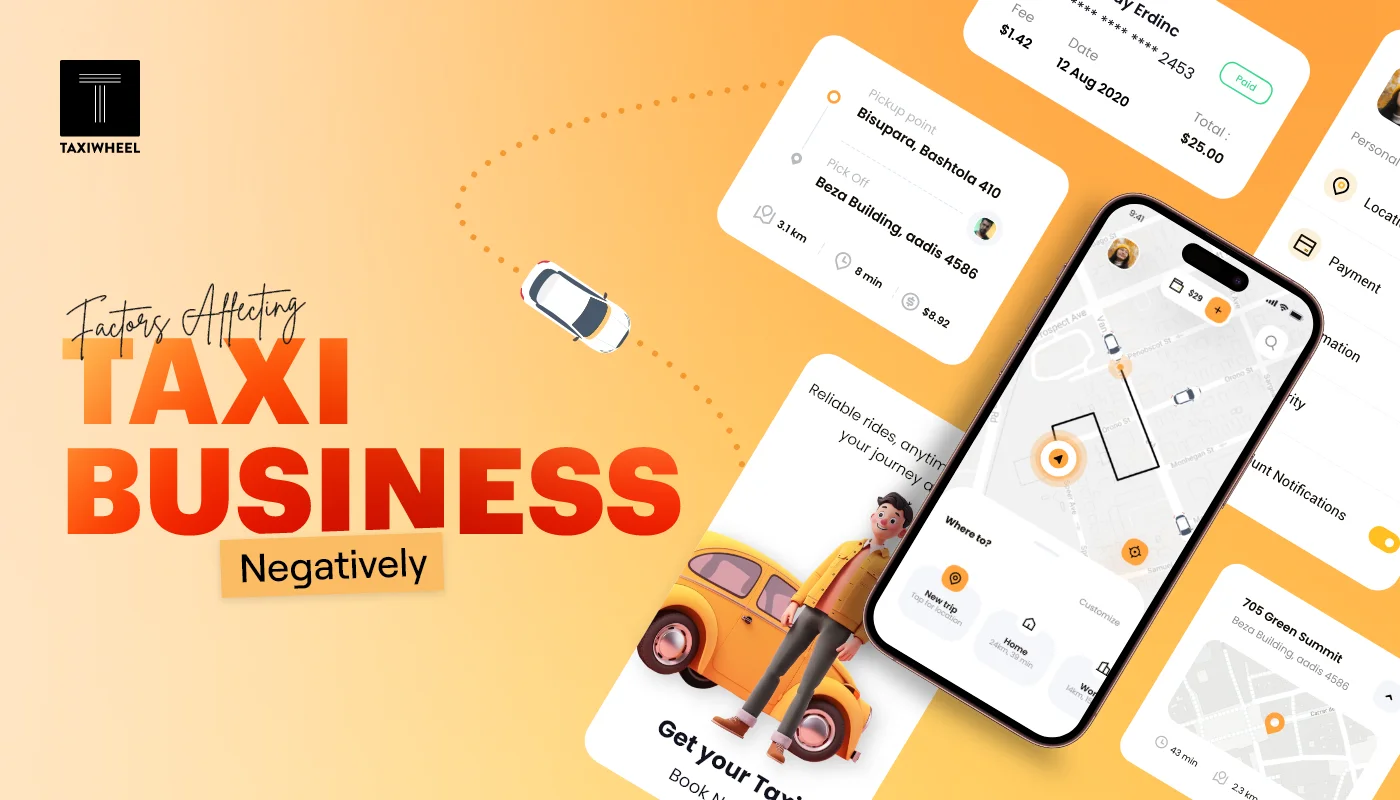
Key Factors Having Negative Impact on Taxi Business
The taxi industry has undergone significant transformations over a decade! With the advancement in tech-driven solutions, people have a convenient way to book taxis from their mobile devices. There are readymade taxi apps available that streamline operations, enhance efficiency, and overall improve customer experience.
Despite these developments, several factors can still pose challenges and negatively impact taxi businesses. Understanding these factors is crucial for stakeholders in the industry to decrease the chances of risks and increase profitability.
Read below:
-
Regulatory Challenges
Regulations for taxi businesses differ greatly by location, making it tough for companies operating in multiple areas. It could be tricky to meet local laws, get licenses, and adapt to rule changes. Also, disputes and legal issues over regulations can disrupt services and harm a taxi company’s reputation. This regulatory complexity often requires dedicated legal and compliance teams, increasing operational costs. Moreover, staying updated with frequent changes in regulations can be challenging and time-consuming, further complicating business operations.
-
Competitive Pressure
The growth of ride-sharing services and taxi booking software has increased competition in the industry. The well-established and new taxi businesses should innovate their working pattern, and provide competitive pricing structures, and great customer service by using AI in customer service to expand their market share.
Here, adopting new technologies like AI for route optimization and enhancing white-label taxi app features can help attract and retain customers. Building strong brand loyalty through customer rewards and maintaining high safety standards are also crucial for staying competitive.
-
Price Competition
Competition over prices in taxi services can lower profits and make finances less stable. Discounts, promotions, and coupon codes attract customers quickly, but they might hurt earnings in the long run. Considering short-term gains and long-term profitability is a good way to manage the growing price competition in the taxi sector. However, offering unique value propositions and superior service quality can help differentiate a taxi business.
-
Qualified Drivers Availability
Having enough qualified drivers is essential for taxi businesses to run smoothly. Due to labor market changes, strict regulations, or competition from other industries, there is a shortage of drivers and it hampers the taxi service quality. Nowadays, recruiting and keeping skilled drivers also becomes harder and more expensive. This puts more stress on resources and potentially reduces customer satisfaction and loyalty.
-
Changing Consumer Preferences
Shifts in consumer preferences for convenience, affordability, and sustainability affect the demand for taxi services. Companies that don’t adapt risk losing their customers to competitors who offer better options, like eco-friendly vehicles or easy booking through a custom taxi app solution.
Additionally, customers increasingly value personalized services and real-time updates on their rides. Taxi companies that fail to implement these modern features may struggle to maintain customer loyalty and market share in a rapidly evolving industry.
-
Technological Disruptions
Technology improves operational efficiency but brings risks like cyber threats, system failures, and reliance on third parties.
Problems like bugs or outdated interfaces in taxi booking software can upset users and harm their reputations.
For smooth taxi operations, it is a good way to trust tech partners and reduce the hazards of such issues. They leverage their expertise and support in managing technological challenges and modernization.
-
Economic Factors
Economic downturns and fluctuations in petrol-diesel rates have a considerable impact on the profitability of taxi industries. Due to higher operating costs, consumers have decreased spending, and business travel ultimately reduced the taxi services demands and negatively impacted the business.
To tackle these challenges, taxi businesses often adjust prices, cut costs, and offer new services to stay financially stable amidst economic uncertainties.
-
Public Perception and Trust
Issues like driver misconduct, safety worries, or bad media coverage can damage how people see taxi services. To address this, companies need clear communication, strong safety rules, and good customer support.
Building a positive reputation through these steps keeps current customers and brings in new ones. Showing a dedication to safety and customer happiness helps taxis handle problems and build trust in their communities over time.
Conclusion
With the enhancement in technology and availability of taxi app solutions, the taxi businesses have been transformed a lot. All the above discussed factors impact the business growth and so, final profitability.
Understanding these factors and implementing proactive strategies help taxi businesses to optimize processes and prioritize customer satisfaction.
Recent Blogs

When you book a ride through a taxi app what’s the first thing you expect? Sure you want the driver to arrive quickly and the app to work smoothly. But above all, you want to feel safe. That’s what keeps people coming back to a service-or leaving it behind for good. For companies investing in […] Read more

For more than a decade, commission-based models have been the backbone of ride-hailing platforms. Companies like Uber and Lyft built their empires by charging drivers a percentage from every trip. It worked in the early years, but the cracks in this system have become harder to ignore. Drivers complain about shrinking margins, passengers face unpredictable […] Read more

The ride-hailing industry is rapidly evolving—and so are the risks. Every time a rider books a trip, or a driver checks a route, valuable data moves through the system. For platform owners, this isn’t just about app performance. It’s about protecting the information that fuels the business. From payment details to real-time locations, taxi app […] Read more